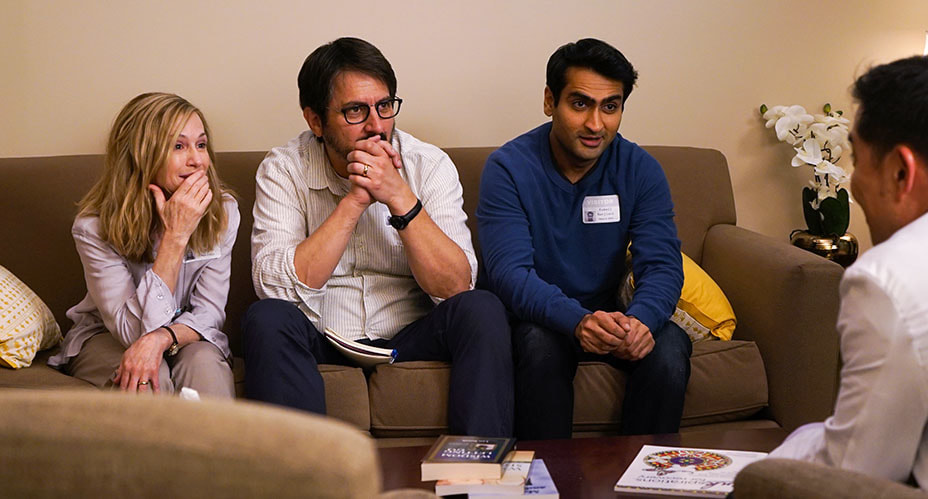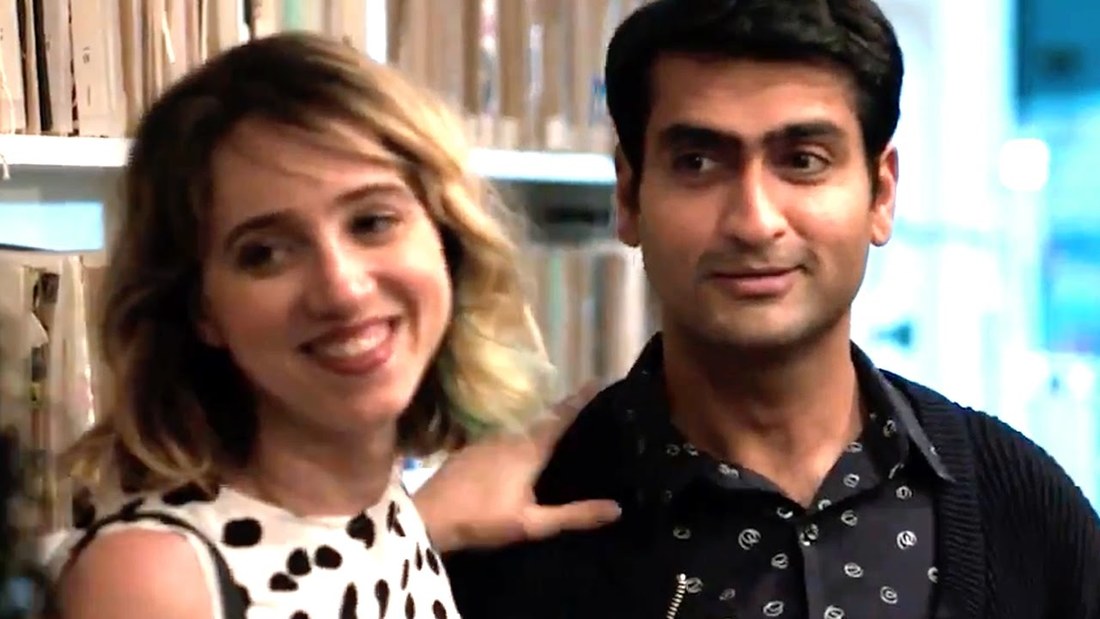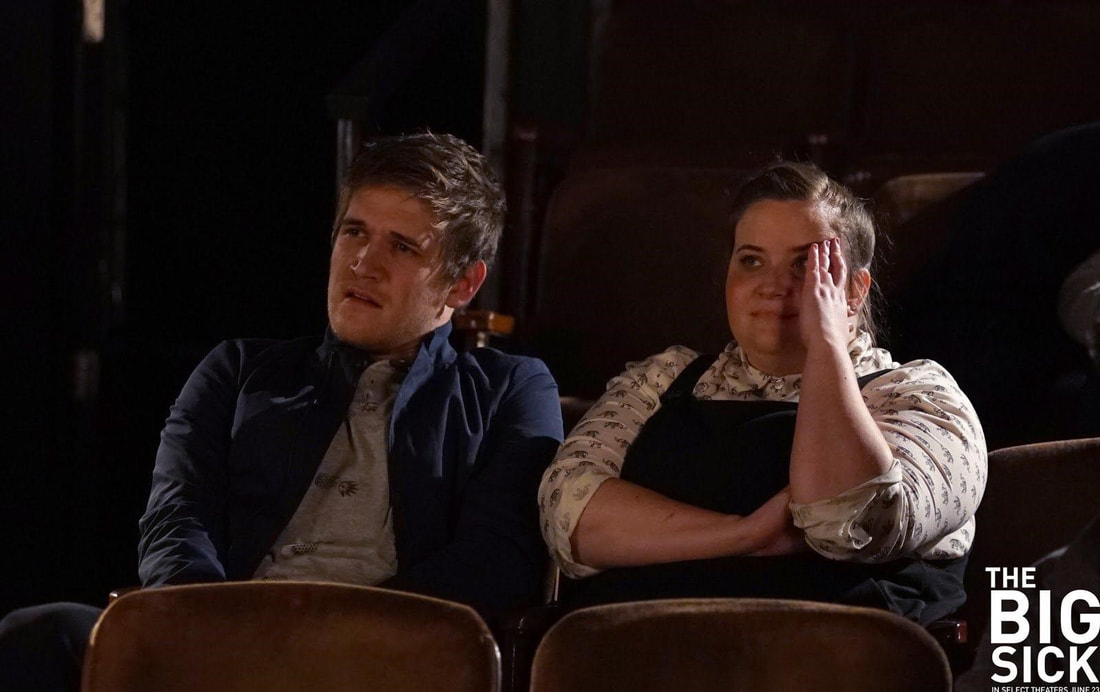Green, John. The Fault in Our Stars. New York: Penguin, 2012.
|
Kumail (Kumail Nanjiani, right) and the Gardeners (Holly Hunter, left and Ray Romano, center) hear the doctor’s news (The Big Sick, Showalter, 2017) by Megan Hess The Big Sick (Showalter, 2017) is boy-meets-girl with a twist – one that involves major medical problems. From the name, it sounds like it might be a film about cancer, but it’s actually closer to If I Stay (Cutler, 2014) than The Fault in Our Stars (Boone, 2014). The marketing campaigns I saw over the summer when this movie first premiered in theaters used humor as its main selling point – so I experienced something very close to a bait and switch when actually watching the movie. (I do admit this may be avoided if one does more thorough research beforehand, but also advocate going in with little prior knowledge, as it makes the plot twists more impactful.) This is, in no way, a bad thing. I loved the true-to-life way The Big Sick balances comedy and tragedy, happiness and hardship. It has an advantage over other narratives in that it’s based on true events, so perhaps that was what made it easier to achieve. Kumail (as himself) and Emily (Zoe Kazan) at a party (The Big Sick, Showalter, 2017) If I had to sum up the movie using a common axiom, it would be “life turns on a dime.” Kumail Nanjiani (playing himself) isn’t looking for a relationship on the night he first meets Emily Gardener (Zoe Kazan). The two have a two-part meet-cute that ends in a one-night stand. Although they say it will be a one-time thing, they keep coming back to each other. To use one of my favorite book quotes of all time (from John Green’s The Fault In Our Stars) they “fell in love the way you fall asleep: slowly, and then all at once” (Green 125). But Kumail’s inability to be fully honest – with Emily, his parents, and himself – interferes with the future of their relationship. When Emily has a sudden and baffling health crisis, he comes back into her life… under duress (at first). Now comes the best part of the movie: Emily’s parents. The Big Sick’s casting director did an incredible job filling these roles. Even though Terry and Beth Gardner (Ray Romano and Holly Hunter) don’t appear actively in love at first, they have incredible chemistry. The comedic moments with their characters are funnier than any of the stand-up comedy performed in the film – including Terry’s “dad joke.” Unfortunately, this near-perfect paring dims the other performances a little. On that note, I also wish Aidy Bryant’s character had a bigger role, or that we at least got to see more of her stand-up, and less of Kumail’s man-child roommate’s (Kurt Braunohler) stupid jokes. (He may look like a young Jim Gaffigan, but he has none of his comedic ingenuity or timing). Kumail's friends and fellow stand-up comics, Mary (Aidy Bryant) and CJ (Bo Burnham) attend a performance of his one-man show (The Big Sick, Showalter, 2017) While The Big Sick was marketed as a romantic comedy, to me, it’s a “gray comedy:” not dark enough to get the black-comedy label, but not a lighthearted, rapid-fire jokes film, either. It’s a comedy for people who don’t think they like comedies – meaning, a lot less raunchy than other movies Judd Apatow has produced, and with smarter jokes. What’s truly compelling about The Big Sick is how it plays with the niche and the familiar. Most audiences cannot relate to Kumail’s specific experiences of being a Pakistani stand-up comic in Chicago, but everyone has watched someone they care about suffer, bombed a big presentation, or hidden something from their parents. Overall, Kumail functions as an everyman whose relatability makes him an effective protagonist, driving the film forward and keeping the viewer engaged. If you want a film that makes you think (and makes you thankful), don’t miss out on The Big Sick. Works Cited
Green, John. The Fault in Our Stars. New York: Penguin, 2012. Comments are closed.
|
Archives
April 2024
|





 RSS Feed
RSS Feed
